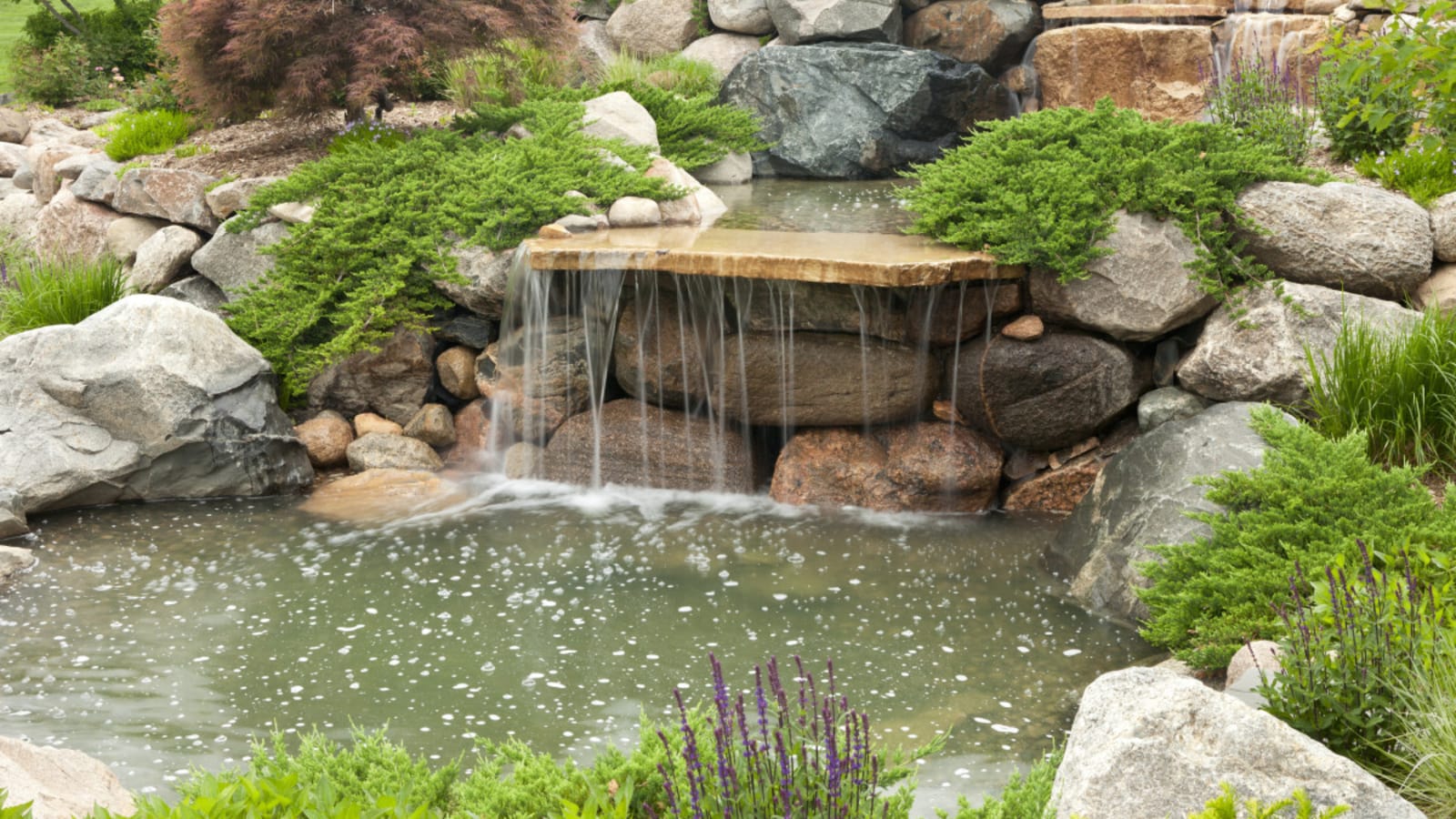
As winter approaches, preparing your backyard waterfall or outdoor water feature for cold temperatures needs to be a prioritized task. This is especially the case if you live in cold climates where freezing temperatures can cause serious damage to your setup. If you live in areas that experience harsh winters (think USDA zones 5 and below), winterizing is a must. However, in warmer regions, like southern California or Florida, you can skip some of these steps or even leave your waterfall running year-round.
Why winterize?
Winterizing your backyard waterfall protects it from the wear and tear that freezing temperatures and ice can inflict. Failing to take proper precautions could lead to cracked pipes, damaged pumps, and expensive repairs come spring.
- Prevent ice damage: Freezing water expands, which can crack plumbing lines, fixtures, and waterfall surfaces.
- Protect your waterfall pump: Running any sort of pond pump in freezing weather for an extended period of time can overwork it and cause costly breakdowns.
- Maintain water quality: Stagnant water during winter can become a breeding ground for algae and bacteria.
- Save on maintenance costs: A little preparation now saves on expensive repairs and replacements later.
How to Winterize a Backyard Waterfall or Water Feature
1. Turn Off the Water Supply
- If your waterfall or water feature has a dedicated water line, turn it off.
- Allow the existing water to drain to prevent freezing in the pipes.
2. Drain the Water Feature
- Use a wet/dry vacuum to remove any standing water from the pond, basin, or waterfall channels.
- If your feature has a pump, remove it now to avoid damage from freezing water.
3. Clean the Feature Thoroughly
- Remove debris like leaves, algae, and dirt before the freeze sets in.
- Cleaning now will prevent decomposition over the winter, making spring maintenance easier.
4. Remove the Pump (If Applicable)
- Take out the pump if your waterfall uses one.
- Store it indoors in a dry location to protect it from freezing temperatures.
- Clean the pump before storing it for the winter.
5. Blow Out the Pipes (For Larger Systems)
- Use an air compressor to blow out any remaining water from pipes or tubing.
- This is especially important for larger water features with extensive plumbing.
6. Cover the Waterfall or Water Feature
- Use a tarp or netting to cover the feature and protect it from leaves, snow, and ice.
- Covering the feature will simplify spring cleaning.
7. Consider Adding a De-Icer (If Necessary)
- If you have fish or want to maintain an ice-free area, consider using a floating pond de-icer.
- This will ensure oxygen exchange, especially if wildlife relies on the water.
FAQ
Can I leave my waterfall running all winter?
In regions with mild winters, you might be able to leave your landscape water features running year-round. However, if temperatures dip toward freezing, it's best to shut them down. Ice can build up and damage the pump or cause blockages, even in milder climates.
What happens if I don’t winterize my water feature?
If you ignore the risks of cold weather on waterfalls or other types of water features, it can lead to cracked pipes, broken pumps, and a huge spring headache. Even with mild moisture buildup, when freezing water expands, it can cause equipment cracking, damage to pipes and to electrical lines. Replacing expensive equipment can be an arduous process to spring maintenance that you'd probably rather avoid.
Do I need to keep the water moving for fish in my pond?
If your waterfall is part of a fish pond, you don’t necessarily need to keep the water moving, but it’s crucial to maintain oxygen levels. A floating de-icer or a form of aeration system can prevent the water from completely freezing, allowing your fish to enjoy their winter slumber (this is key even if you have a pondless waterfall).
More must-reads:
- AFCON 2025: The biggest and best moments from the Round of 16
- Athletics run into unexpected roadblock in Las Vegas move
- The 'Most sacks in an NFL season' quiz
Breaking News
Trending News
Customize Your Newsletter
 +
+
Get the latest news and rumors, customized to your favorite sports and teams. Emailed daily. Always free!








